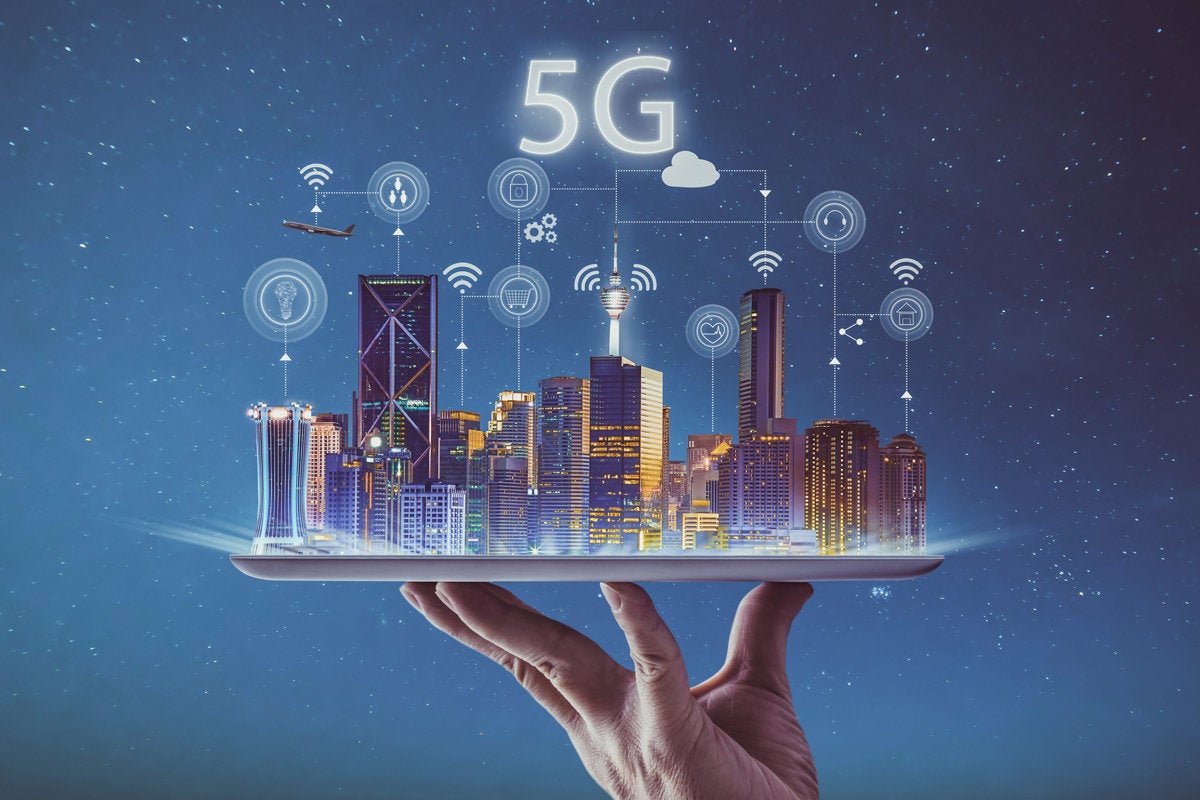By: Monica J. Malouf

The newest generation of mobile networking is upon us. AT&T and Verizon have rolled out their 5G—which stands for 5th generation—plans, and in 2020 both providers intend expansion to nationwide coverage.[1]
In a nutshell, 5G is “a new cellular standard.”[2] It will improve interconnection between users, as well as connection with “smart” devices.[3] It will deliver multi-gigabyte/second rates, decreased latency or lag, increased capacity, and provide “a more uniform user experience.”[4]
Not only will 5G transform cellular network connection, but it will also improve mission-critical communications, “enable[ing] new services that can transform industries with ultra-reliable/available, low latency links—such as remote control of critical infrastructure, vehicles, and medical procedures.”[5] 5G could also generate significant revenue for the U.S. economy, although the full economic effect is yet to be realized.[6]
These improvements obviously appeal to consumers across all network providers. But the appeal comes at a high cost.
To implement nationwide access, the large wireless companies will need to construct or install thousands of new towers. Although they are not “towers,” technically—more like pole-like extensions with booster antennas connected to lamp-posts and stop lights. Nonetheless, these towers prove semi-invasive, and people across the country are displeased.
5G requires that towers be erected in closer proximity to users,[7] which means closer proximity to homes. AT&T plans to implement 300,000 this year.[8] These towers are eye-sores that the company plans to attach to already existing infrastructure in neighborhoods.[9] Quicker access and connectivity comes a price, right?
Homeowners from New York to Maryland have expressed their concerns about these new cell towers popping up in their neighborhoods.[10] They claim health concerns regarding increased radiation exposure, specifically fears that the exposure causes cancer.[11] Citizens in Albany have created a group demanding a moratorium on construction until health concerns are addressed.[12]
However, research on the health effects of cell-phone emitted radiation has been inconsistent.[13] The Telecom industry and even the Federal Communications Commission (FCC) have assured the public that 5G is safe.[14] Additionally, some scientists proffer statistics which show that the human skin can block radio waves at higher frequencies.[15] Nonetheless, people across the world have banded around health concerns surrounding 5G, slowing the implementation of the new generation of mobile networking.[16]
Like any advance in technology, new legal questions arise with the unveiling of the new network. Questions of health, privacy, intellectual property, and other legal implications circle around this next generation of mobile networking. In the race with China to implement nationwide 5G access, the FCC has placed constraints on cities and local governments in their ability to regular 5G within their localities.[17]
The U.S. Conference of Mayors released a statement in opposition following the FCC’s order, stating:
“Despite efforts by local and state governments, including scores of commenters in the agency’s docket, the Commission has embarked on an unprecedented federal intrusion into local (and state) government property rights that will have substantial and continuing adverse impacts on cities and their taxpayers, including reduced funding for essential local government services, and needlessly introduce increased risk of right-of-way and other public safety hazards.”[18]
Legal questions will continue to circle around 5G. Will new towers expose users to new levels of radiation? Will the new connective features among smart devices lead to privacy breaches? Will the new towers affect property prices or other elements of the real estate market? The list continues.
Societal desires for faster, more efficient and innovative data-access move with a momentum that the law seems to never quite match. And while that seems daunting for consumers, it means unchartered territory for attorneys. And with unchartered territory means works. Lots of work.
[1] See Brian X. Chen, What You Need to Know About 5G in 2020, N.Y. Times: Tech Fix ( Jan. 8, 2020), https://www.nytimes.com/2020/01/08/technology/personaltech/5g-mobile-network.html?auth=login-google1tap&login=google1tap.
[2] Id.
[3] See Everything You Need to Know About 5G, Qualcomm: 5g FAQ (last visited Jan. 16, 2020), https://www.qualcomm.com/invention/5g/what-is-5g.
[4] Id.
[5] Id.
[6] See id.
[7] See Chen, supra note 1.
[8] 5G Service is Coming – And So Are Health Concerns Over The Towers That Support It, CBS News (May 29, 2018, 8:39 AM), https://www.cbsnews.com/news/5g-network-cell-towers-raise-health-concerns-for-some-residents/.
[10] See id.; see also Paul Grondahl, 5G Cell Protests Span from Albany to Europe to Russia, Times Union (May 14, 2019, 8:41 PM), https://www.timesunion.com/news/article/Grondahl-5G-cell-protests-span-from-Albany-to-13843495.php#photo-17439917.
[11] See 5G Service is Coming, supra note 8.
[12] See Grondahl, supra note 10.
[13] See id.
[14] See Tad Simons, The Great Rollout: Will 5G Be a Boon for Lawyers?, Thompson Reuters: Legal Executive Institute (July 23, 2019), http://www.legalexecutiveinstitute.com/5g-lawyers-boon/.
[15] See William J. Broad, The 5G Health Hazard That Isn’t, N.Y. Times (July 16, 2019), https://www.nytimes.com/2019/07/16/science/5g-cellphones-wireless-cancer.html; see also Reality Check Team, Does 5G Pose Health Risks?, BBC News ( July 15, 2019), https://www.bbc.com/news/world-europe-48616174.
[16] See Thomas Seal & Albertina Torsoli, Health Scares Slow the Rollout of 5G Cell Towers in Europe, Bloomberg Businessweek (Jan. 15, 2020, 12:01 AM), https://www.bloomberg.com/news/articles/2020-01-15/health-scares-slow-the-rollout-of-5g-cell-towers-in-europe.
[17] See Simons, supra note 14.
[18] Statement by U.S. Conference of Mayors CEO & Executive Director Tom Cochran on FCC’s Order Subordinating Local Property Rights, The United States Conference of Mayors, https://www.usmayors.org/2018/09/26/statement-by-u-s-conference-of-mayors-ceo-executive-director-tom-cochran-on-fccs-order-subordinating-local-property-rights/.
image source: https://www.computerworld.com/article/3310067/why-5g-will-disappoint-everyone.html
